Key takeaways:
- Creative success is defined by personal growth, emotional connections, and collaborative efforts rather than solely by accolades.
- Measuring success through both quantitative metrics and qualitative client feedback fosters a culture of continuous improvement and enhances design impact.
- Regular self-reflection and feedback sessions are essential for recognizing areas of improvement and embracing a collaborative spirit in teams.
- Celebrating and documenting successes can motivate teams and provide insights for future creative endeavors.
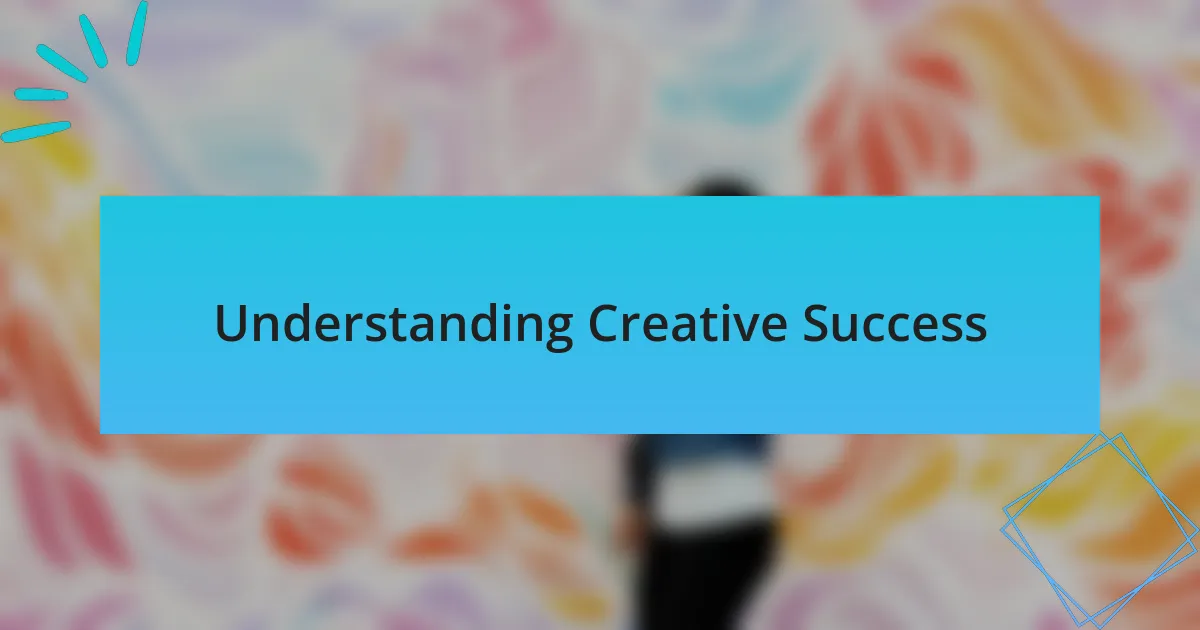
Understanding Creative Success
Creative success can often feel elusive, defined by personal benchmarks rather than universally accepted standards. I remember when I completed a project that didn’t just meet the client’s expectations but sparked genuine excitement within their team. That moment made me realize that the true measure of success lies in the emotions we evoke and the connections we build.
Have you ever revisited a project and felt a mix of pride and nostalgia? I’ve experienced that when I look back on campaigns that not only resonated with audiences but also pushed my creative boundaries. It taught me that creative success is also about growth—both personal and artistic—and the way we embrace challenges that shape us.
Understanding creative success isn’t merely about accolades or recognition; it’s about the joy of the journey itself. When I see my team collaborate and innovate, it fills me with a sense of achievement beyond what any award could represent. How do you define success in your creative endeavors? That question often leads me to a deeper reflection on the meaningful impact of our work.
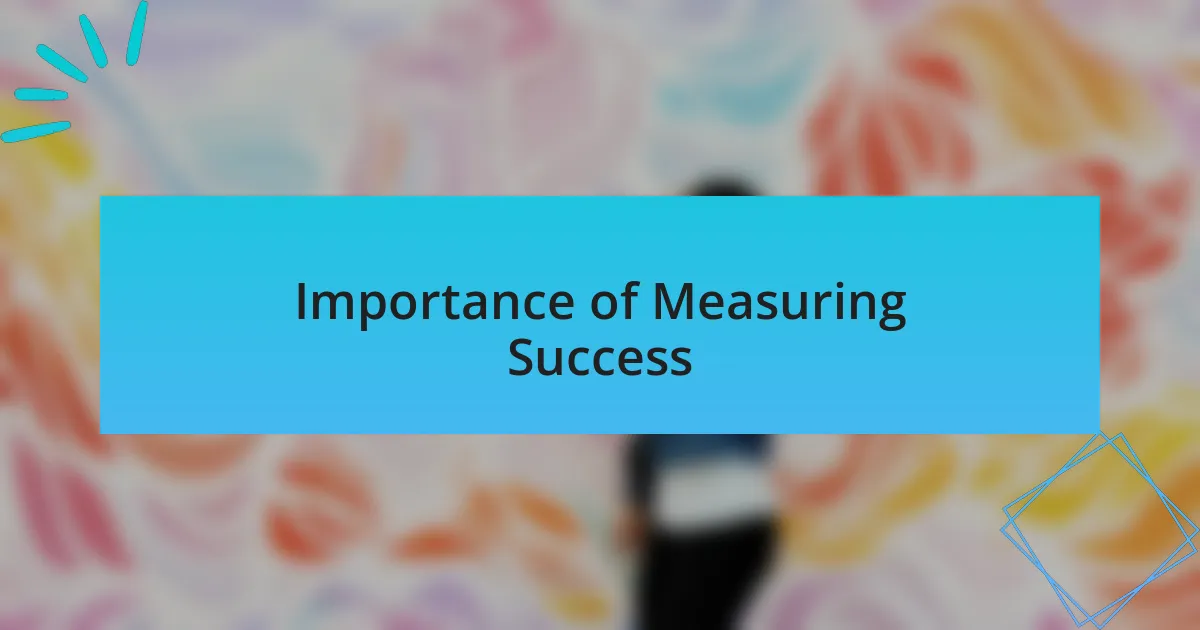
Importance of Measuring Success
Measuring success in a design context is crucial for understanding the impact of our work. I remember one project where we meticulously tracked user engagement metrics after a redesign. The data revealed not just increased traffic, but also a higher conversion rate—indicators that our creative efforts were actually resonating with users. It felt empowering to see that our creativity could translate into tangible results.
But is success purely numbers? I often argue that while metrics are important, they only tell part of the story. When I engage with clients and receive feedback about how a design has transformed their business, that emotional response often holds more weight than any statistic. It’s those stories that connect us to our work and remind us why we chose this path in the first place.
Ultimately, measuring success fosters a culture of continuous improvement. Reflecting on our outcomes—not just the victories but the shortcomings as well—allows us to refine our approach. I find myself constantly asking: what lessons can we draw from each project? This introspective process not only enhances our current work but also shapes our future creative endeavors.
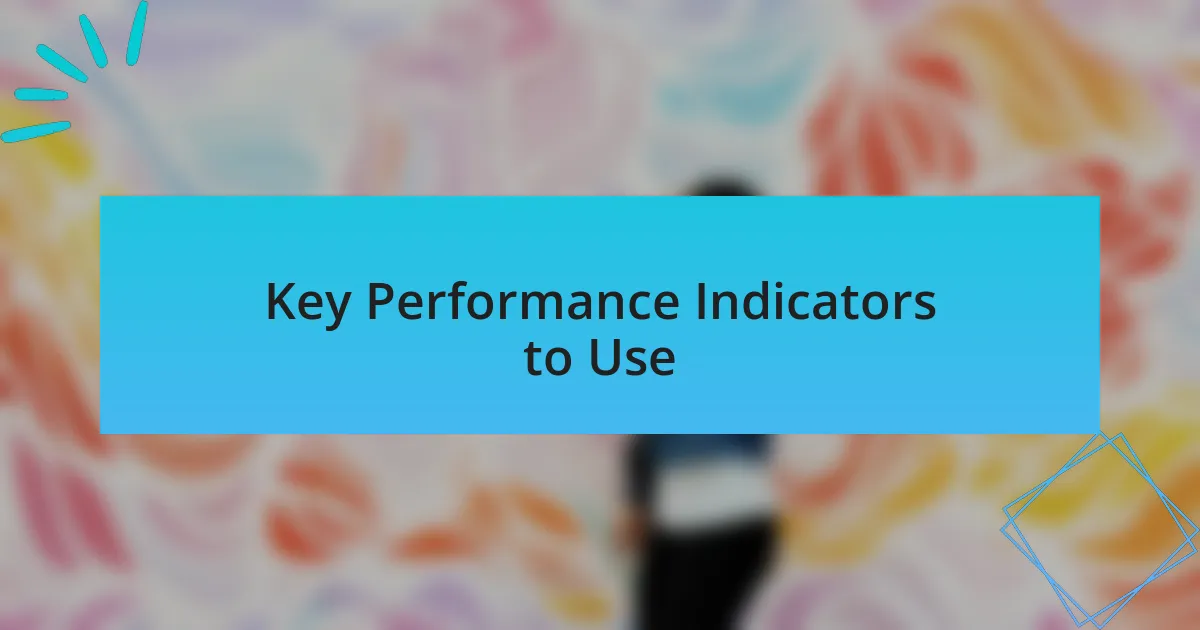
Key Performance Indicators to Use
When considering key performance indicators (KPIs) for measuring creative success in design, user experience metrics often take center stage. I remember a time when we launched a new interface, closely monitoring the Net Promoter Score (NPS) to gauge client satisfaction. This metric became invaluable; we could see how likely users were to recommend our design, and it provided a clear reflection of its impact.
Another powerful KPI to consider is social media engagement. I once worked with a client whose campaign went viral, and tracking likes, shares, and comments revealed not only popular design elements but also community sentiment. It begs the question: how does audience engagement translate into brand loyalty and long-term success? By analyzing these interactions, we can adapt our designs to maintain that momentum.
Lastly, I often turn to conversion rates as a vital KPI when assessing design effectiveness. In one project, we revamped a landing page, and within weeks, we saw conversions double. This tangible result highlighted the direct correlation between thoughtful design and business outcomes. How often do we overlook this connection? It’s essential to remember that design is not just about aesthetics, but about driving real, measurable success.
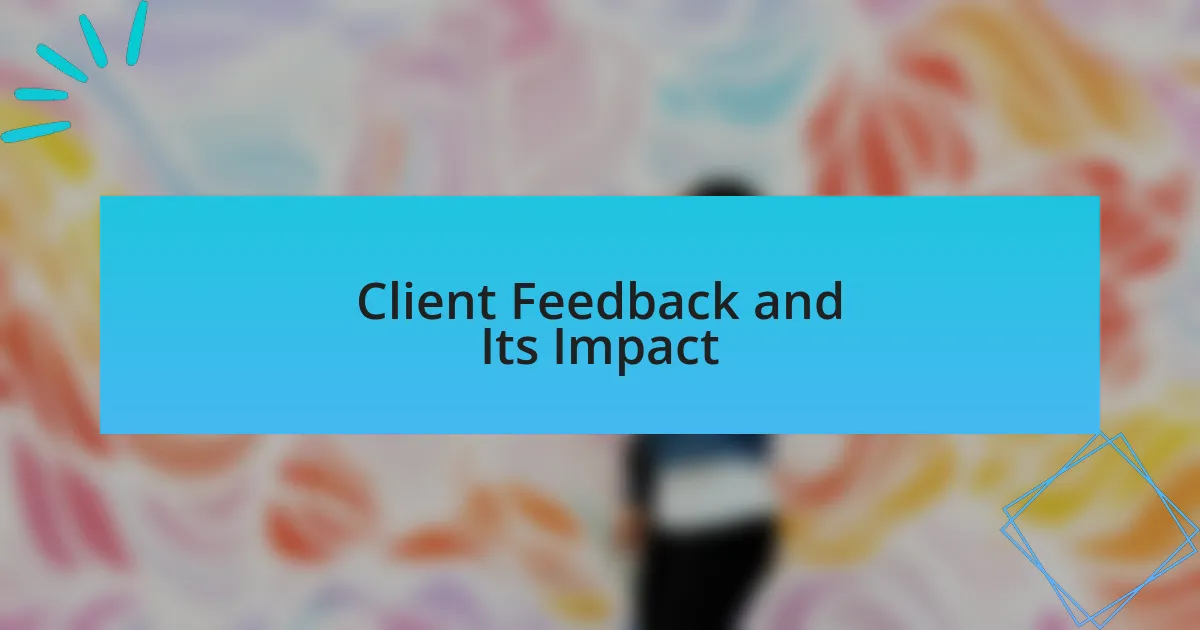
Client Feedback and Its Impact
Client feedback plays a pivotal role in understanding the actual impact of our designs. I recall a project where initial client reactions were lukewarm, which pushed us to invite them into the design process more actively. Their insights not only reshaped our approach but also transformed how we viewed client collaboration—suddenly, we weren’t just delivering a product; we were co-creators of something meaningful. How often do we forget that a client’s perspective can unveil opportunities we may have missed?
In another instance, after presenting a design, I was surprised by a client’s constructive critique that focused on user navigation. Instead of feeling defensive, I learned to embrace their feedback as a gift. It reinforced the idea that true success doesn’t come solely from our creative vision but flourishes through an open dialogue with clients. Isn’t it fascinating how their experiences can lead to better user journeys?
Ultimately, I’ve found that regular client feedback sessions foster trust and ensure alignment. When clients feel heard, they’re more invested in the project’s success, which can significantly enhance the overall experience. Reflecting on this, I ask myself: isn’t the essence of creativity about collaboration? Each piece of feedback has the potential to elevate our work, turning a simple design into an impactful solution.
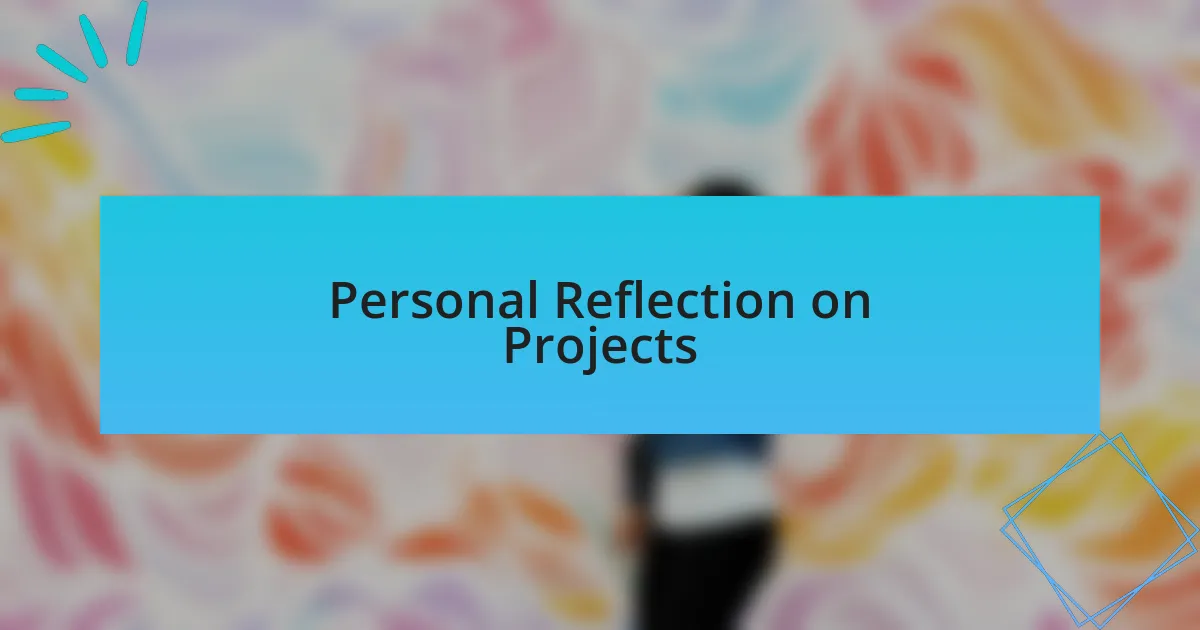
Personal Reflection on Projects
The project that stands out most in my memory was a rebranding initiative for a local nonprofit. I poured my heart into it, but it wasn’t until my team and I set aside time for personal reflection that we realized something crucial. We had focused so much on visuals that we had overlooked the core mission of the organization. This reflection sparked a redesign that truly resonated with their values, reminding me how pivotal it is to step back and connect deeply with the project’s purpose.
Another time, while working on a marketing campaign, I felt an overwhelming wave of uncertainty about our direction. It was only after gathering my thoughts and contemplating our goals that I understood the importance of aligning our creative choices with the client’s vision. Isn’t that moment of doubt often the precursor to greater clarity? That project taught me that self-reflection can turn ambiguity into inspiration, and it’s often where the most profound insights emerge.
During a recent project debrief, I shared my struggles with balancing creativity and client expectations. I realized that articulating these experiences not only helped my team process the project but also allowed us to learn from our challenges. How can we grow if we don’t pause to consider our creative journey? It’s fascinating how these shared reflections foster a culture of continuous improvement, leading to richer outcomes in future endeavors.

Continuous Improvement Strategies
To truly embrace continuous improvement, I often initiate feedback sessions with my team after major projects. I remember a time when we received mixed reviews on a campaign. Instead of brushing it aside, we gathered, discussed what worked and what didn’t, and even invited outside perspectives. This openness helped us refine our approach and ignited a passion for growth within the team. How often do we reflect on feedback as a tool rather than criticism?
I also make it a habit to set aside time for self-evaluation, where I review not just the outcomes but the process. During one particular project, I recognized that my initial concept had some great elements, but I had faltered in execution. This insight wasn’t easy to admit, yet it fueled my determination to enhance my skills. I often wonder: how can we move forward without examining the paths we’ve already taken?
Implementing small changes regularly has been transformative as well. For instance, I introduced weekly brainstorming sessions where everyone brings fresh ideas, big or small. This practice not only strengthens our collaborative spirit but also cultivates an atmosphere where continuous improvement thrives. Can you think of a time when a simple tweak sparked a significant shift in your work? These incremental adjustments can lead to exceptional results.

Celebrating and Documenting Success
Celebrating success is a vital part of our creative journey. I recall a project where we exceeded our client’s expectations, and instead of just moving on, we hosted a small celebration to acknowledge everyone’s hard work. This moment not only solidified our team’s bond but also reminded us of the impact of our efforts. Have you taken the time to celebrate your wins, big or small?
Documenting success is equally important. After wrapping up projects, I often compile case studies that highlight not only the outcomes but also the challenges we faced and how we overcame them. I find that revisiting these stories can be a powerful motivator during tougher times, serving as a tangible reminder of our capabilities. How can you use your past successes to inspire future creativity?
Reflecting on moments of triumph can offer deeper insights into our creative processes. For instance, I keep a success journal where I note not just the achievements but the emotions tied to them. It’s fascinating how these reflections can unveil patterns in our work and spark fresh ideas. Have you ever considered how documenting your success might shape your future projects?